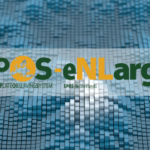University of Strathclyde wins funding on research on geothermal from flooded coal mines
Energy Disrupter
Early stage funding granted to the University of Strathclyde in Glasgow, will allow the school to develop plans on tapping into geothermal energy from flooded coal mines in Scotland. With that it keeps a shot at further larger funding.
Researchers at the University of Strathclyde have won early stage funding to develop plans to tap into the geothermal energy contained within disused, flooded coal mines in Scotland.
The HotScot project is one of 17 shortlisted submissions across the UK chosen by the UK Research and Innovation (UKRI) Strength in Places Fund to develop a full-stage bid that could lead to significant economic growth.
The consortium behind the project will submit their bid to UKRI in late 2020, with four to eight of the strongest bids set to receive between GBP10m and GBP50m ($13m/ $66m) each to carry out their proposals.
If successful, the HotScot consortium will develop at least three new mine-water geothermal heating/cooling/thermal energy storage sites in the Central Belt.
The consortium will deliver research and development to de-risk the technologies and support Scottish industry to build such sites across the UK and globally.
The GBP 21 million ($27.5m) investment in these sites, in tandem with GBP 16 million ($21m) research and innovation activities, will demonstrate the commercial potential to private sector investors of low-cost, low-emissions heating, cooling and heat storage for communities and businesses.
Development of mine-water geothermal across Scotland could deliver economic growth equivalent to GBP 303 million ($397 million) and around 9,800 jobs. The consortium is being led by Professor
Zoe Shipton, from the Department of Civil & Environmental Engineering, and includes Glasgow, Heriot-Watt and Stirling universities, British Geological Survey, Coal Authority, Community Energy Scotland, ENGIE, Envirocentre, Ramboll, Scottish Enterprise, SSE Enterprise, Synaptec, Synergie Environ, and TownRock Energy.
Heat trapped in 600 km3 of disused mine-workings in the Central Belt of Scotland could meet up to 8% of Scotland’s domestic heating demand.
Professor Shipton said: “Scotland has an ambitious target to reach net-zero greenhouse gas emissions by 2045, with a 75% reduction by 2030.
“Heat trapped in flooded coal mines represents a vast untapped low-carbon energy resource. The UK’s former coal mines are a £3 billion liability, but HotScot can demonstrate how these old mines could become an economic asset.
“Flooded coal mines contain water with little to no seasonal variation in temperature making them an ideal heat source for district heating networks to support low-carbon, affordable heating, cooling and heat storage for local communities and businesses.”
The main barriers to exploiting this energy is proving the resources and costs to investors.
The HotScot consortium will develop at least three active geothermal sites and retrofit two more at different scales and with varying end-users.
All of the data the team generate will be publicly available through a portal run by the British Geological Survey as part of the UK Geoenergy Observatories project
The project has three core themes: Minimising technical, geological, environmental, societal risks; maximising socio-economic benefits; and engaging communities in their energy future.
Researchers will also engage with universities and colleges to develop graduate apprenticeships and new training programmes alongside industrial and local authority partners to fill the skills shortage in the sector.
Creative industry partners, Handiwork Games, Screen Scotland and Timeslip media will produce engaging materials for school children and adults across multiple media platforms.
Professor Shipton said: “The combination of core research, learning-by-doing and the resulting targeted research will not only de-risk the individual projects but address global barriers to mine-water geothermal heating/cooling/thermal energy storage as a technology: creating employment within the Central Belt of Scotland, long-term export opportunities for Scottish skills and products, and sustainable economic growth beyond the project lifespan.”
Source: University of Strathclyde Glasgow

















